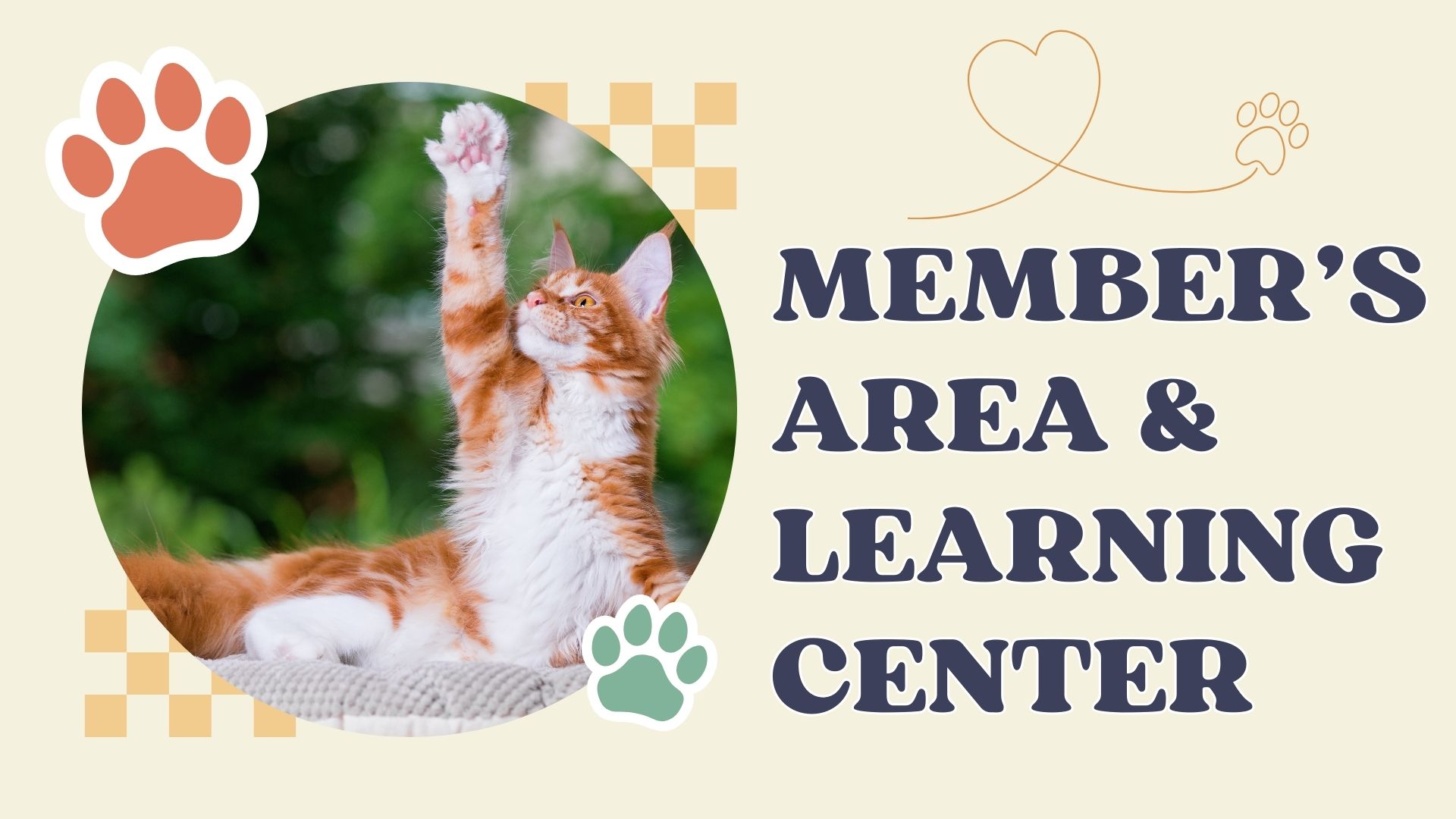- Home
- Maine Coon Cat Health
- How to Help Your Cat Lose Weight
Signs Your Cat Needs to Lose Weight and How to Start
Are you thinking your cat needs to lose weight? Maine Coons are known for their large, sturdy frames. Unlike most indoor cats, they are naturally big-boned and muscular.
Understanding the Maine Coon's Size
Weight Expectations
Males often weigh between 13 and 18 pounds, while females range from 8 to 12 pounds. These numbers can vary, and some Maine Coons are even larger.
However, their big size doesn’t automatically mean they're carrying excess weight. It can be tough to tell if a Maine Coon is overweight because of their naturally hefty build.
Challenges in Identifying Overweight Maine Coons
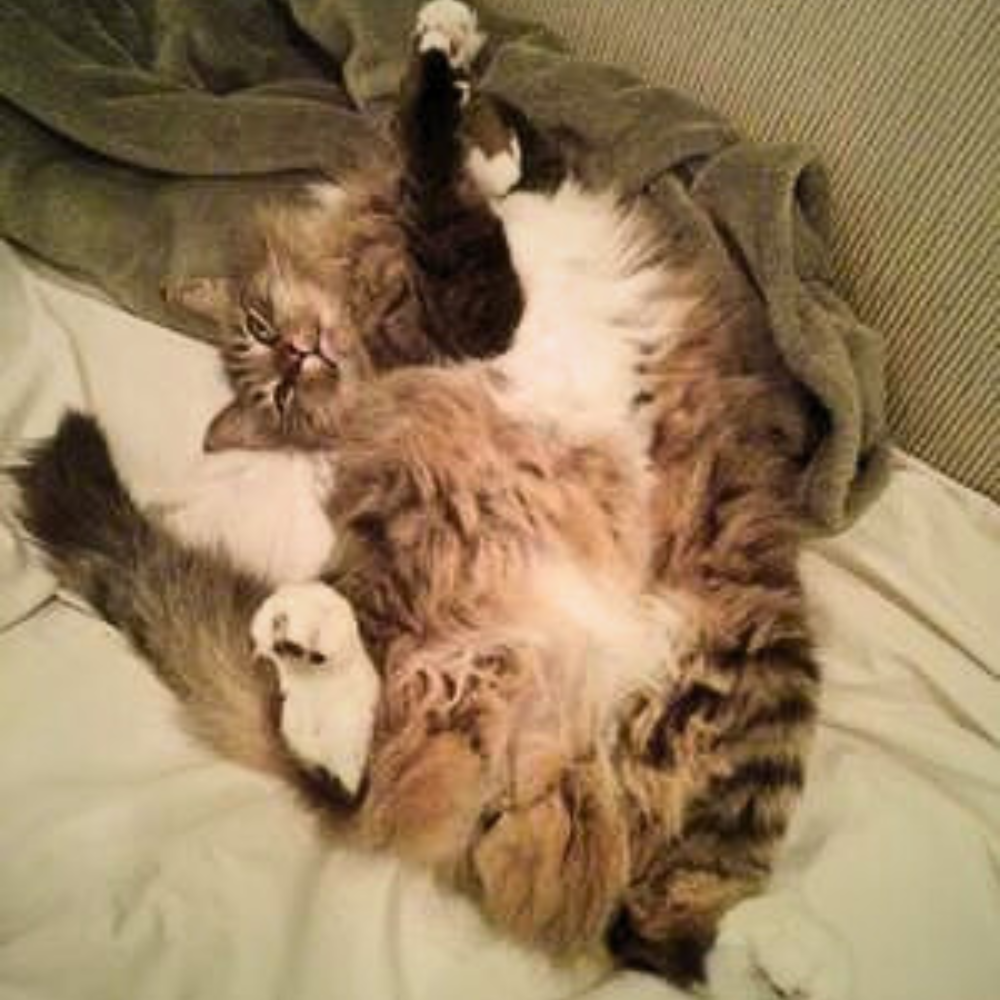
Because Maine Coons are supposed to be larger, many owners might not realize their feline friend is overweight.
It's easy to mistake their thick fur and sturdy structure for extra bulk.
For some Maine Coons, the difference between a healthy weight and being overweight isn’t obvious.
However, obese cats - those carrying significantly extra pounds - will show signs, such as decreased mobility or difficulty grooming.
Size Variations in the Breed
Not all Maine Coons reach the larger end of the weight spectrum. Some are more average in size, closer to 10 or 12 pounds.
These smaller Maine Coons are at risk of being overfed if owners try to push them toward the "trendy" heavier size.
Keeping up with their naturally active nature and maintaining an ideal body weight is far better than aiming for a big number on the scale.
This is especially important for indoor kitties, which may not get the same level of exercise as outdoor cats.
To get a better idea of what a wide range of possibility there is in healthy Maine Coon weights, check out our growth and size chart.
Health Risks of Obesity in Cats
Common Health Risks
Obesity in cats leads to serious health problems. Overweight cats are at a higher risk of developing diabetes mellitus, heart disease, and high blood pressure.
Weight gain also increases the chances of joint pain and arthritis, making it harder for cats to move around.
Obese cats are more likely to develop fatty liver disease, also known as hepatic lipidosis, which can be life-threatening if not treated early.
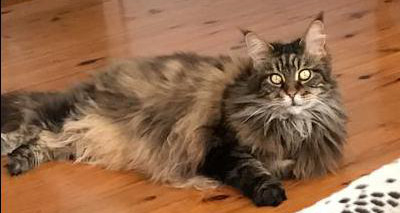
Importance of Maintaining a Healthy Weight
Keeping your cat at a healthy weight can prevent many of these serious conditions.
Indoor cats, in particular, are prone to weight gain since they often get less exercise.
Maintaining a proper weight will improve your cat’s quality of life, energy levels, and overall lifespan.
It’s essential to avoid allowing your cat to become overweight or obese, as it can shorten their life and cause unnecessary suffering.
How to Tell if Your Cat is Overweight
It can be hard for pet parents to know if their cat is carrying extra weight.
Overweight pets are common, especially indoor cats who don't get as much exercise.
However, determining if your feline friend is at risk of cat obesity isn’t as tricky as it may seem.
One of the best ways to figure out if your kitty is overweight is by using a body condition score.
What is a Body Condition Score?
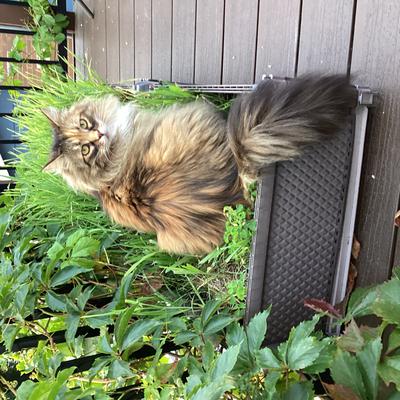
A body condition score (BCS) is a tool veterinarians use to assess if a cat is underweight, overweight, or at their ideal weight.
This score usually ranges from 1 to 9, with 1 being too thin and 9 representing severe obesity.
A score of 5 indicates a cat is at a healthy weight.
Pet parents can use the BCS as a guideline to check their kitty’s weight at home, but it's always best to have a vet give their professional opinion.
Checking Your Cat's Body
To estimate your cat's ideal weight, feel along their ribs. In a healthy-weight cat, you should be able to feel the ribs without pressing too hard, and there should be a slight waistline when looking from above.
If you have to press down to feel their ribs, or if their waistline isn’t visible, your pet may be carrying extra weight.
Additionally, if your Maine Coon or other cat has a sagging belly or noticeable fat deposits on their back or sides, they may be overweight.
Pet parents often mistake their cat’s fluffiness or natural size for fat, especially with breeds like Maine Coons.
It's important to look past the fur and focus on the body underneath. While some Maine Coons are naturally large, even big-boned cats shouldn’t be carrying extra weight.
6 Signs of Overweight Cats
Aside from physical checks, there are behavioral signs that your pet may be overweight.
If your feline friend seems less active than usual, avoids jumping or climbing, or has trouble grooming themselves, these could be signs of weight gain.
Overweight pets often have less energy, and you might notice they spend more time lying around than playing.
Difficulty grooming is especially common in overweight or obese cats, as it becomes harder for them to reach certain areas of their body.
Cat obesity can also lead to shortness of breath or panting after moderate activity. If you notice your kitty getting winded after a little exercise, it's a red flag that they may be carrying too much weight.
Cats that are too heavy may also sleep more and interact less with their surroundings.
Consult Your Veterinarian
Even though pet parents can check their cat’s body condition at home, the best way to know if your cat is overweight is by asking a vet.
Your vet will help assess your cat's ideal weight based on their age, size, and breed.
This is especially important for Maine Coons, who can range widely in size, making it harder to judge their weight on your own.
Veterinarians can provide a professional body condition score and recommend a target weight range for your specific kitty.
They’ll also check for underlying health issues that could cause weight gain, such as thyroid problems or other metabolic disorders.
Regular vet check-ups are essential for monitoring your pet’s health, especially when it comes to cat obesity.
Your vet can guide you through weight loss plans or diet changes to help your Maine Coon or other cat reach their ideal weight.
It’s always better to prevent obesity in the first place, but even if your pet is already carrying extra weight, your vet can help develop a safe and effective plan to get them back on track.
In summary, understanding your cat’s body condition score and recognizing the signs of excess weight are key steps toward maintaining a healthy weight.
Always rely on your veterinarian’s guidance to ensure your furry friend stays happy, healthy, and active.
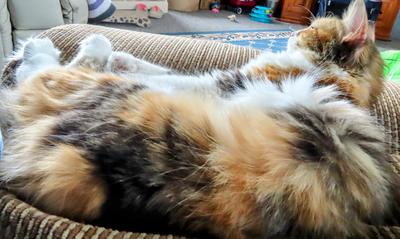
Practical Steps to Help Your Cat Lose Weight Safely
Once you know your cat is overweight, it's time to take action. Helping your feline friend lose weight requires a thoughtful approach, as losing too much too fast can be dangerous.
It’s essential to create a safe and effective weight loss plan with the guidance of your vet.
Here are some practical tips for helping your Maine Coon or any cat shed those extra pounds.
Diet Change: Adjust the Amount of Food
The first step in any cat weight loss plan is reducing the amount of food your kitty eats.
Many pet parents don’t realize how much they’re feeding their cat. Indoor cats, in particular, don’t need as many calories as more active outdoor cats.
You’ll want to measure your pet’s food carefully and follow your vet’s recommendations. Consider using an automatic feeder to control portion sizes and avoid overfeeding.
Switch to Wet Food
Many cats can benefit from switching to wet food during weight loss. Wet food typically contains more moisture and protein than dry food, helping your cat feel fuller with fewer calories.
Cats are obligate carnivores, meaning they need a high-protein diet to thrive. Wet food mimics their natural diet better than kibble, making it an excellent choice for weight management.
Be sure to choose a formula that supports weight loss or maintenance, as some wet foods can be calorie-dense.
Small Meals Throughout the Day
Instead of giving your kitty one or two large meals, try offering small meals throughout the day.
This helps maintain their energy levels and prevents overeating. Cats are natural hunters and prefer to eat smaller portions multiple times a day.
An automatic feeder can be useful for distributing meals evenly, especially if you’re not home all day. Offering small, regular meals also supports your cat's metabolism during their new diet plan.
Encourage Physical Activity
Exercise is crucial for burning calories when a cat needs to lose weight. One of the easiest ways to get your kitty moving is with laser pointers.
Cats love chasing the light, and it’s a great way to get them active without much effort on your part.
You can also invest in interactive toys like puzzle feeders or climbing towers to encourage your pet to move more.
For Maine Coons, who are naturally playful and curious, these activities can be particularly fun.
If your cat enjoys exploring vertical spaces, providing them with cat trees or shelves can inspire climbing, which is excellent exercise.
The key is to find activities your pet enjoys and keep them engaged.
Limit Treats
Treats are often packed with calories, and they can add up quickly.
If you’ve been giving your kitty snacks throughout the day, this may be contributing to their weight gain.
Cut back on treats, or switch to low-calorie options that fit within your cat’s weight loss plan.
Treats should make up only a small portion of their daily calorie intake, so it’s essential to track how much you’re giving.
Consider Puzzle Feeders
Another great way to control your cat’s calorie intake is with puzzle feeders.
These interactive feeders make your kitty work for their food, slowing down their eating and encouraging mental stimulation.
Puzzle feeders also help prevent boredom, which can sometimes lead to overeating. They’re especially useful for indoor cats who may not get as much exercise as outdoor cats.
Consult Your Vet Regularly
Finally, make sure to check in with your vet regularly to monitor your cat’s progress. Your vet can track your cat’s weight loss and adjust their diet or exercise plan as needed.
Weight loss should be gradual—losing too much too fast can lead to health concerns.
Cats, especially overweight or obese ones, are at risk of developing hepatic lipidosis (fatty liver disease) if they lose weight too quickly, so it’s crucial to follow a steady, controlled approach.
Helping your cat lose weight requires a combination of portion control, a high-protein diet, regular physical activity, and patience.
With the right plan and support, your feline friend can reach a healthy weight and enjoy a happier, healthier life.
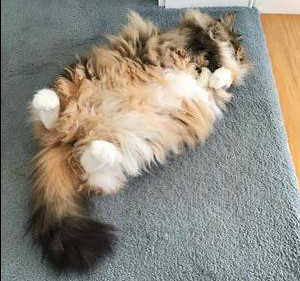
FAQ's (Frequently Asked Questions) When a Cat Needs to Lose Weight
How can I tell if my cat is overweight?
How can I tell if my cat is overweight?
You can check your cat’s body condition score (BCS) by feeling their ribs and checking for a waistline.
If their ribs are hard to feel or there's no waist, it's likely your cat needs to lose weight. A vet can provide a professional assessment.
What is the best food to help my cat lose weight?
What is the best food to help my cat lose weight?
Wet food is often a good choice for weight loss, as it has fewer calories and more moisture than dry food. Look for high-protein, low-calorie options that mimic a cat's natural diet. Always consult your vet before switching to a new diet.
How much should I feed my cat to help them lose weight?
How much should I feed my cat to help them lose weight?
The amount of food depends on your cat's weight, activity level, and specific dietary needs.
Your vet can give precise recommendations, but generally, feeding small, controlled portions several times a day helps manage weight.
How can I get my lazy indoor cat to exercise?
How can I get my lazy indoor cat to exercise?
Encourage activity with interactive toys like laser pointers or puzzle feeders that stimulate their mind and body.
Try vertical climbing spaces like cat trees, and schedule regular play sessions to keep them moving.
Can cats lose weight too fast?
Can cats lose weight too fast?
Yes, cats should lose weight gradually. Rapid weight loss can lead to hepatic lipidosis (fatty liver disease), a serious condition. Work with your vet to ensure a safe, steady weight loss plan for your pet.
Top of: When a Cat Needs to Lose Weight
« Back to Maine Coon Health
